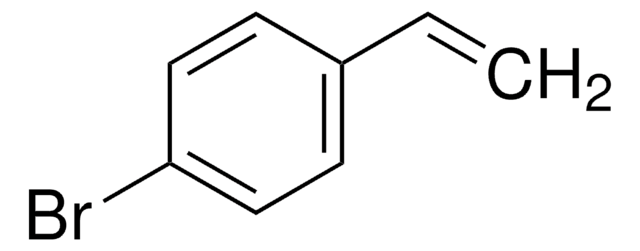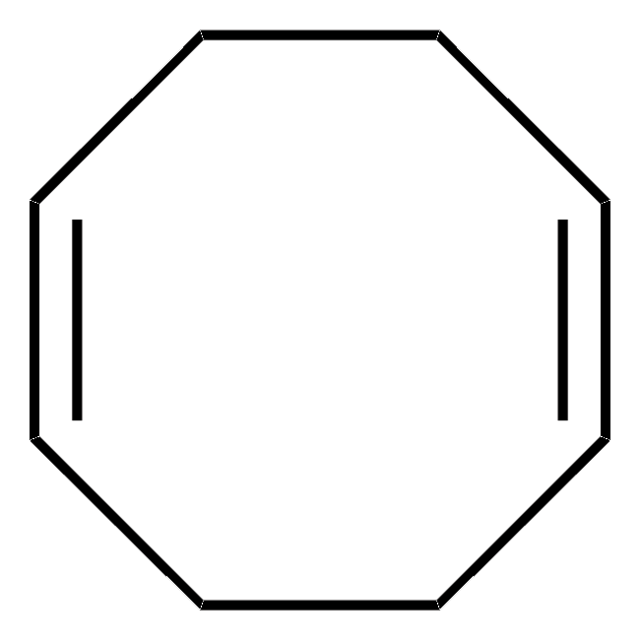If this product has an expiration or retest date, it will be shown on the Certificate of Analysis (COA, CofA). If there is no retest or expiration date listed on the product's COA, we do not have suitable stability data to determine a shelf life. For these products, the only date on the COA will be the release date; a retest, expiration, or use-by-date will not be displayed.
For all products, we recommend handling per defined conditions as printed in our product literature and website product descriptions. We recommend that products should be routinely inspected by customers to ensure they perform as expected.
For products without retest or expiration dates, our standard warranty of 1 year from the date of shipment is applicable.
For more information, please refer to the Product Dating Information document: https://www.sigmaaldrich.com/deepweb/assets/sigmaaldrich/marketing/global/documents/449/386/product-dating-information-mk.pdf
157449
β-Bromostyrene
97%
Sinonimo/i:
beta-Bromostyrene, 1-Bromo-2-phenylethylene
Scegli un formato
Scegli un formato
About This Item
Prodotti consigliati
Livello qualitativo
Saggio
97%
Stato
liquid
Indice di rifrazione
n20/D 1.607 (lit.)
P. ebollizione
110-112 °C/20 mmHg (lit.)
Punto di fusione
7 °C (lit.)
Densità
1.427 g/mL at 25 °C (lit.)
Gruppo funzionale
bromo
phenyl
Temperatura di conservazione
2-8°C
Stringa SMILE
Br\C=C\c1ccccc1
InChI
1S/C8H7Br/c9-7-6-8-4-2-1-3-5-8/h1-7H/b7-6+
YMOONIIMQBGTDU-VOTSOKGWSA-N
Cerchi prodotti simili? Visita Guida al confronto tra prodotti
Categorie correlate
Descrizione generale
Applicazioni
Avvertenze
Warning
Indicazioni di pericolo
Classi di pericolo
Acute Tox. 4 Oral
Codice della classe di stoccaggio
10 - Combustible liquids
Classe di pericolosità dell'acqua (WGK)
WGK 3
Punto d’infiammabilità (°F)
215.6 °F - closed cup
Punto d’infiammabilità (°C)
102 °C - closed cup
Dispositivi di protezione individuale
Eyeshields, Faceshields, Gloves, type ABEK (EN14387) respirator filter
Scegli una delle versioni più recenti:
Possiedi già questo prodotto?
I documenti relativi ai prodotti acquistati recentemente sono disponibili nell’Archivio dei documenti.
I clienti hanno visto anche
-
How can I determine the shelf life / expiration / retest date of this product?
1 risposta-
Utile?
-
-
How is shipping temperature determined? And how is it related to the product storage temperature?
1 risposta-
Products may be shipped at a different temperature than the recommended long-term storage temperature. If the product quality is sensitive to short-term exposure to conditions other than the recommended long-term storage, it will be shipped on wet or dry-ice. If the product quality is NOT affected by short-term exposure to conditions other than the recommended long-term storage, it will be shipped at ambient temperature. As shipping routes are configured for minimum transit times, shipping at ambient temperature helps control shipping costs for our customers. For more information, please refer to the Storage and Transport Conditions document: https://www.sigmaaldrich.com/deepweb/assets/sigmaaldrich/marketing/global/documents/316/622/storage-transport-conditions-mk.pdf
Utile?
-
-
WHAT IS THE STEREOCHEMISTRY OF THIS COMPOUND?
1 risposta-
The entire product is likely planar due to the conjugated effect between the aromatic ring and C=C double bond.
Utile?
-
-
is there any possibility for decreacing the purity of the compound with out innert gases storage???
1 risposta-
Yes, the purity of may decline over time if exposed to atmospheric oxygen. Storing the compound under inert gas, such as nitrogen or argon, prevents decomposition. Please see the link below to review additional information regarding the breakdown reaction published to PubChem:
https://pubchem.ncbi.nlm.nih.gov/compound/5314126#section=Non-Human-Toxicity-ValuesUtile?
-
Filtri attivi
Il team dei nostri ricercatori vanta grande esperienza in tutte le aree della ricerca quali Life Science, scienza dei materiali, sintesi chimica, cromatografia, discipline analitiche, ecc..
Contatta l'Assistenza Tecnica.










